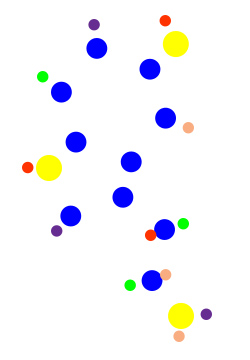Three Parents & A Baby
/IVF image: ZEISS microscopes
This week, doctors in the UK have been granted permission to use the ‘three-parent’ technique to prevent the inheritance of incurable genetic diseases.
This method was first used last year to help a Jordanian couple, whose first two children died of Leigh Syndrome, have a healthy child. Leigh syndrome is a severe neurological disorder that affects the central nervous system, occurring in about 1 in 40,000 newborns. There are several different mutations that can cause this disease found in both nuclear DNA, the main genetic information of cells found in the nucleus, and mitochondrial DNA, that only has about 37 genes. Mitochondria are organelles within our cells that regulate the production of energy, and are inherited only from the mother.
The aim of this procedure is to prevent the mother’s affected mitochondria, carrying mutations for any mitochondrial disease, of being passes on to her children.
The method approved in the UK, is the fertilization of both the mother’s and donor’s eggs with the father’s sperm first. The nucleus is then removed before they divide into early-stage embryos. The mother’s nucleus is then placed into the donor’s egg, while the nucleus of the donor is destroyed. The resulting egg has the nucleus of the mother, but importantly the healthy mitochondrial DNA of the donor. Unfortunately, this requires that one of the embryo’s is destroyed, which some parents may be opposed to, as with the aforementioned Jordanian couple.
In the second method, the nucleus of the mother is removed and inserted into the egg of a donor, which had its own nucleus removed. The resulting egg is then fertilised with the sperm of the father. This method was successfully used in 2016, resulting in the birth of a healthy baby boy.
There is still controversy over the three-parent baby technique. This technique does have the potential of helping many couples have a healthy child, and reducing the risk of these mitochondria diseases being passed on to future generations. However, there is the possibility that mitochondria carrying the mutation could still be carried over, replicate and increase in number over time, and thus potentially cause the disease to appear at a later date. But with one in 5,000 children being born with a mitochondrial disease that are often fatal, this reproductive choice is welcomed by many affected parents.
If you enjoyed reading this, please like, share or leave a comment.




